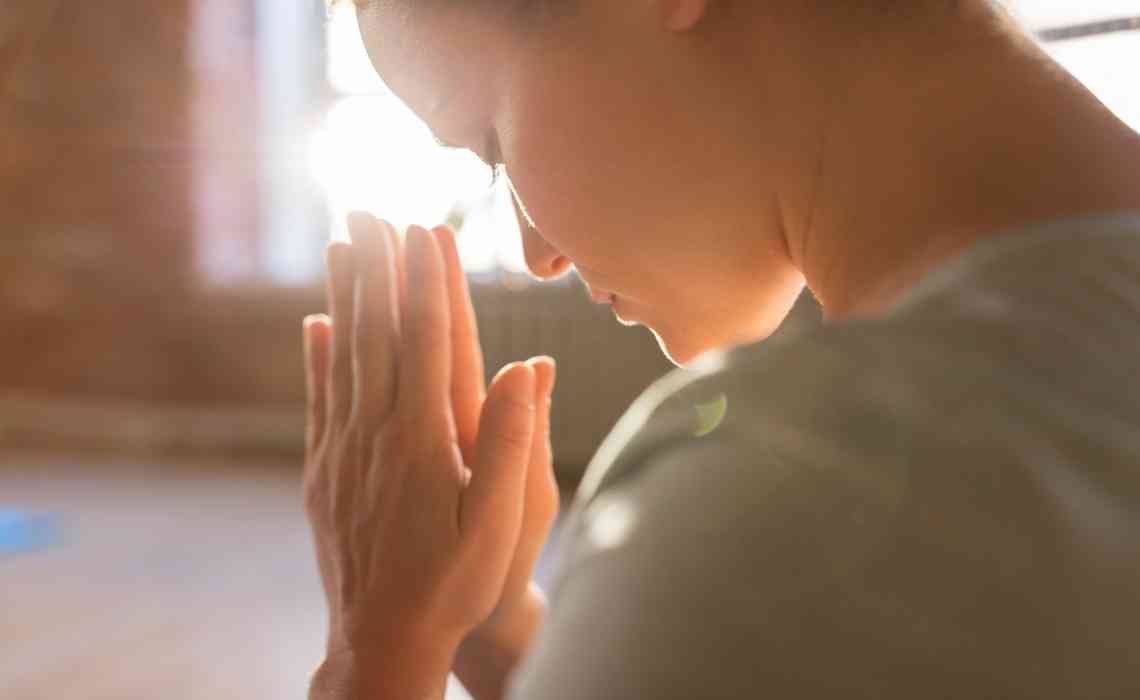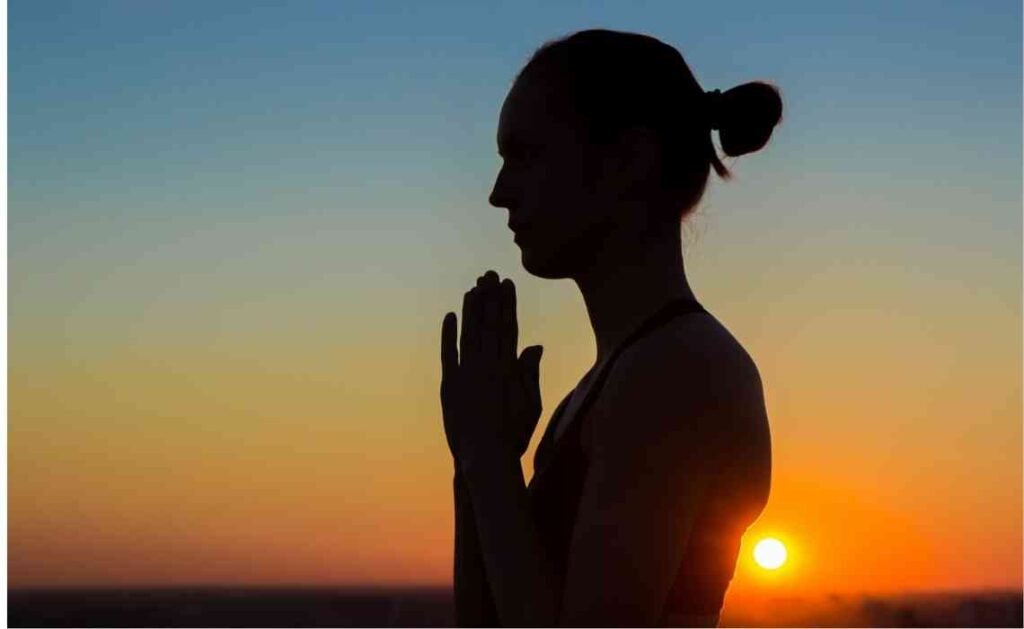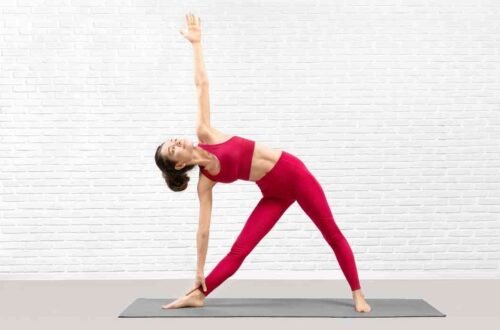
What Does Namaste Really Mean in Yoga? Full Simple Guide
When you walk into a yoga class, it is very common to hear the word “namaste” at the end of the session. Maybe your teacher says it with hands pressed together and a gentle bow. But what does namaste really mean in yoga? Why do people say it, and where does it come from? Let’s break it down into simple words, so even a 10-year-old can easily explain it.
The Meaning of Namaste
“Namaste” is a word from the ancient Sanskrit language. Sanskrit is one of the oldest languages in the world and was spoken in India thousands of years ago. In Sanskrit, “namaste” is made up of two parts: “namah” means “bow” or “to honor,” and “te” means “you.”

So when someone says “namaste,” they are really saying, “I bow to you” or “I honor you.” It is a respectful and kind way of greeting someone. It shows that you see the goodness, the light, and the spirit inside them.
Namaste in Everyday Life
In countries like India and Nepal, people often say “namaste” when they meet someone or when they leave. It’s a greeting just like “hello” or “goodbye” in English. However, when they say it, they usually press their palms together in front of their chest and give a little bow.
This simple gesture means a lot. It shows respect, friendliness, and a feeling that both people are equal. It is not just about words; it is about the feeling behind the words.
Namaste in Yoga Classes
In yoga, “namaste” has an even deeper meaning. When a yoga teacher says “namaste” at the end of a class, they are thanking the students. They are also honoring the special connection that was shared during the class.
Yoga is not just about stretching your body. It is also about finding peace inside yourself and connecting with others. By saying “namaste,” the teacher and the students recognize that they all share the same spirit and goodness inside.
The teacher might say “the light in me honors the light in you” when they say “namaste.” This means that everyone has a beautiful light or spirit inside them, and we should honor and respect each other.
The Gesture That Goes With Namaste
When people say “namaste,” they often press their hands together, fingers pointing up, and hold them close to the heart. This hand position is called “Anjali Mudra.”
“Mudra” means a hand gesture in Sanskrit. “Anjali” means offering. So “Anjali Mudra” means offering with your hands. It shows you are offering respect and kindness from your heart.
Sometimes people bow their heads a little while doing this. Bowing is a way to show humility and respect. It’s like saying, “I see and honor the best part of you.”
Why Is Namaste Important in Yoga?
Yoga is more than just physical exercise. It is a way to connect the body, mind, and spirit. Saying “namaste” reminds us that yoga is about kindness, peace, and understanding.
When we say “namaste,” we are saying that beyond all our differences like skin color, age, or background we are all the same inside. We are all human beings with feelings, dreams, and hopes. This simple word helps create a peaceful and respectful space.
The Deeper Spiritual Meaning of Namaste
Some people believe that “namaste” has an even deeper spiritual meaning. They believe that when you say “namaste,” you are recognizing the divine spark inside the other person.
In simple words, it means that we all have a special, wonderful part inside us. Some people call it spirit, soul, or simply goodness. By saying “namaste,” we say, “I see that beautiful part of you, and I respect it.”
Different Ways Namaste Is Used in Yoga
There are many ways “namaste” is used in yoga. Sometimes, teachers say it at the beginning of the class. This is a way of greeting and setting a peaceful mood.
Other times, it is said at the end of class to show gratitude and to close the session in a peaceful way. Sometimes, students say “namaste” back to the teacher to show their respect and thanks.
Some yoga classes even include a short meditation on “namaste,” where everyone takes a moment to feel thankful for the shared time and energy.
Common Misunderstandings About Namaste
Some people think “namaste” just means “thank you.” While it is often used with gratitude, its real meaning is deeper. It is about respect and seeing the good in others.
Also, some people say “namaste” without really thinking about it. It is important to remember that in yoga, “namaste” should come from the heart. It is not just a habit; it is a real and meaningful way to connect.
How to Properly Say Namaste
The correct way to say “namaste” is “nah-mah-stay.” It sounds gentle and calm.
When you say it, try to do it with a warm feeling inside. Press your hands together, close your eyes if you want, bow your head slightly, and really feel the meaning. It’s about sending kindness and respect from your heart.
Can You Say Namaste Outside Yoga?
Yes, you can! You can say “namaste” to greet friends, family, or anyone else. It is a beautiful way to show respect.
If you are feeling thankful to someone, or if you want to show kindness and honor their spirit, you can say “namaste.” It is not just for yoga classes. It is a word that can be used anytime you want to spread peace and kindness.
The Connection Between Namaste and Yoga Philosophy
Yoga is built on ideas like kindness, honesty, and respect. These ideas are called “the Yamas” and “the Niyamas” in yoga philosophy.
Saying “namaste” fits perfectly with these ideas. It is a way to practice kindness (called “ahimsa” in Sanskrit) and respect for others. It helps us remember that yoga is not just about poses; it is also about how we treat each other every day.
Teaching Children About Namaste
Teaching children about “namaste” can be a beautiful lesson. You can explain that it is like giving someone a hug with your heart. It is a way of saying, “I see the good in you, and I am thankful.”
Children can learn to use “namaste” when they want to show respect or kindness. It can help them understand the value of treating others with love and care.
Bringing Namaste Into Your Life
You do not have to be in a yoga class to bring “namaste” into your life, you can use it as a way to remember to be kind, patient, and loving every day.
You can start your morning by saying “namaste” to yourself in the mirror. This reminds you to honor and respect yourself too. You can also say it quietly in your heart when you meet new people or when you want to feel more peaceful.
Namaste Is More Than Just a Word
“Namaste” is a small word with a big meaning. It teaches us to see the goodness in others and to connect with kindness and respect. In yoga, it reminds us that beyond our different faces and stories, we all share the same light inside.
So the next time you hear “namaste” in a yoga class, or say it to someone, remember it is more than just a word. It is a bridge between hearts, a moment of peace, and a gift you give and receive at the same time.





